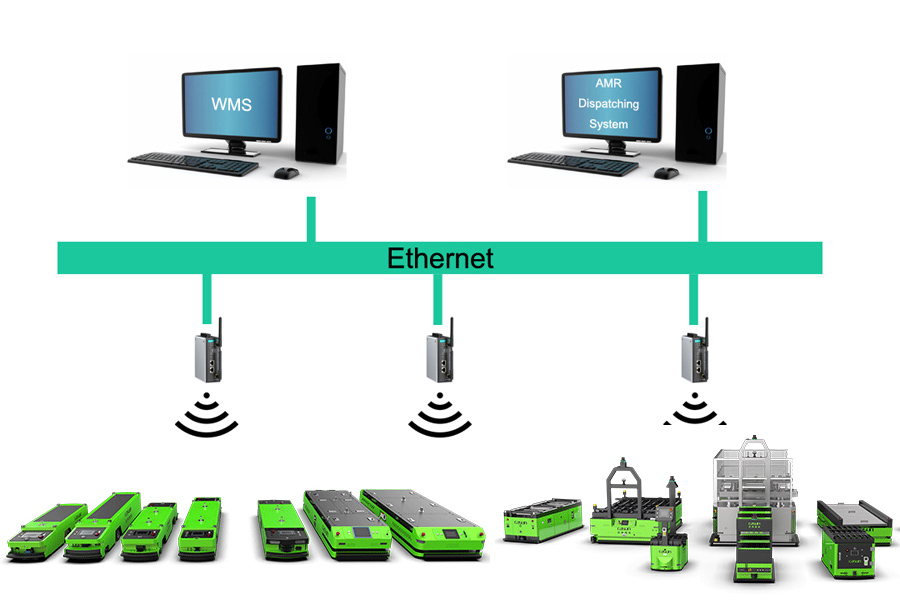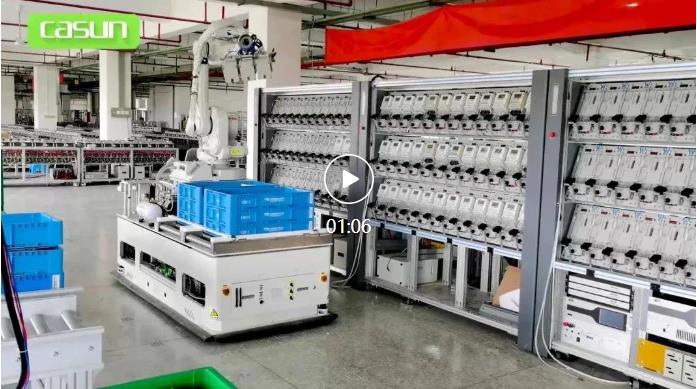In SLAM theory, the first problem is called localization, the second is called mapping, and the third is the subsequent path planning. We hope to help the little robot solve this problem with the help of navigation tools. Therefore, SLAM navigation came into being.
Contents
The full name of SLAM is Simultaneous Localization and Mapping. It is mainly used to solve the problem of robot positioning and map construction when moving in an unknown environment.
The two modules of positioning and map construction are like the relationship between chicken and egg. The simultaneous unknown of the two makes SLAM is much more difficult than any one of them. After 30 years of research, SLAM technology has made remarkable achievements and gradually entered the field of robotics applications.
As the market continues to rise, it is estimated that in 2020, the annual sales revenue of global warehousing robots is expected to exceed 30 billion U.S. dollars. Market positioning and industrial upgrading requirements make navigation and positioning an urgent task. SLAM (Instant Positioning and Map Construction) is used as autonomous positioning and navigation. An important breakthrough in technology, how to take advantage of the trend?
For a warehouse robot, completing a task requires not only the “brain” to make thinking and decision-making, but also the “cerebellum” to execute the decision (positioning and navigation). If a pyramid is used to represent robotics, then positioning and navigation is the core module that connects the bottom-level motion control and the upper-level task execution. Traditional positioning and navigation technology needs to set up markers (magnetic nails, ribbons, QR codes, etc.) indoors to achieve the required accuracy, while SLAM technology does not need to change the environment, and has stronger applicability. It solves its complex calculations. After the bottleneck of degree and accuracy, it began to take advantage of the momentum.
The implementation of SLAM is closely related to difficulty and sensors. At present, the sensors that implement SLAM are roughly divided into two categories: laser and vision. Compared with images, lidar can directly measure the relative position between the target and the sensor, making lidar SLAM technology more concise and efficient. The development of lidar in recent years has greatly improved the measurement accuracy of the sensor itself, making lidar SLAM the mainstream positioning and navigation method.
A set of SLAM systems can collect 50,000 square meters of indoor data a day and automatically draw maps for future use. For most warehouses, the mapping can be completed in less than a day without any labor cost. Compared with setting markers, SLAM navigation is more efficient and can meet the needs of more applications.
Industry innovation needs to focus on three dimensions
Through 30 years of algorithm research, the SLAM algorithm is almost perfect in the theoretical framework, and open-source SLAM modules on the Internet are also emerging in endlessly. However, the complexity of actual application scenarios is much higher, the differences between the scenarios are obvious, and the general SLAM algorithm module is not competent. Therefore, in the future development of SLAM, not only need to improve the accuracy theoretically but also need to be adjusted according to actual application requirements.
The current mature SLAM system is divided into two parts: front-end and back-end. The front end extracts sensor data estimates the robot state and builds a graph model; the back end optimizes the constructed graph model. In comparison, the front-end computing complexity is low, but it is directly connected to the robot’s motion, which requires high real-time performance; while the back-end has low real-time requirements, but the computing complexity is high, which exceeds the computing power of ordinary robots. Therefore, in combination with the cloud server platform, the front-end and back-end are separated, and the server carries the back-end optimization, which can increase real-time performance under the premise of improving accuracy.
Regarding the demands of customers and the innovation of the industry, the following dimensions need to be emphasized:
- The first is ease of use. When customers use a certain technology, they do not need additional development, debugging and secondary development, which not only greatly reduces the development time, but also can be combined with the SDK for flexible and diverse function extensions.
- The second is low cost. The total cost of the robot needs to be lower than the equivalent labor cost. The SLAM positioning and navigation technology needs to be supported by its technical support, so that the service robot in the early stage of the industry has no cost pressure.
- The third is high precision. The positioning accuracy of the service robot during the movement needs to be at least 10cm, while the industrial storage robot even needs an accuracy of 1-2cm. Although the positioning accuracy can be improved by pre-importing high-precision maps (such as CAD models), this also reduces the user experience.
Application of SLAM technology in warehousing
SLAM navigation technology also plays a vital role in the field of intelligent storage. Whether it’s a robot or an unmanned cart, there are four core and fundamental problems: positioning technology, tracking technology, path planning technology, and control technology.
SLAM navigation uses lidar to observe the scene, create a map in real-time and correct the position of the robot, without the need for manual placement of markers such as two-dimensional codes, ribbons, and magnetic stripes, and truly realize zero transformation of the working environment.
On the other hand, through the real-time detection of obstacles by lidar, the trajectory can be effectively planned to avoid obstacles, and the applicability and safety of human-machine hybrid scenarios can be improved.

